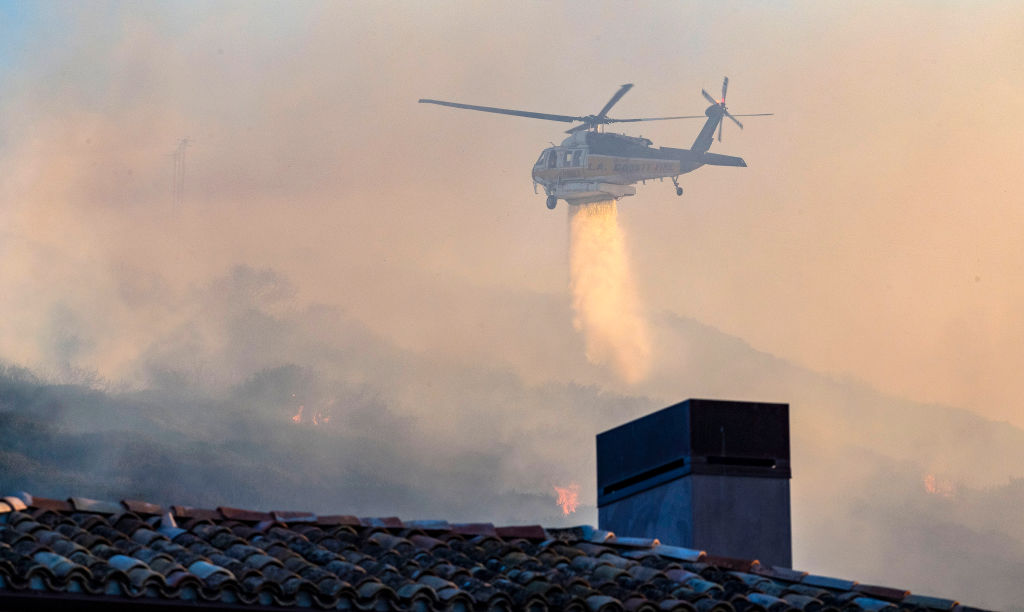Across the country, the climate crisis is wreaking havoc on insurance markets. As climate change fuels more intense storms and wildfires, home insurers in disaster-prone states like Texas, Louisiana, and Florida have stopped issuing and renewing policies. In some cases, companies have even gone under in the aftermath of a particularly damaging natural disaster. As a result, homeowners are contending with skyrocketing premium payments and even beginning to struggle to find insurers willing to cover them at all.
The latest sign of the insurance industry tumult came from State Farm, the largest homeowners insurance provider in California. Last week, the company revealed that it would no longer offer policies to new Golden State customers due to “historic increases in construction costs outpacing inflation, rapidly growing catastrophe exposure, and a challenging reinsurance market.”
“It’s necessary to take these actions now to improve the company’s financial strength,” the company noted in a press release. State Farm indicated it would continue to keep the customers it already has on its books in California.
California’s insurance industry has been struggling to stay afloat in a state increasingly ravaged by fires and floods. Since 2017, when a series of catastrophic fires caused $33 billion in damages, insurers in the state have lost two decades of underwriting profit. As a result, the cost of homeowners insurance has risen by a quarter since 2015, and insurance companies have been withdrawing coverage in the most fire-prone parts of the state in an attempt to reduce the liability on their books. Meanwhile, Californians who have been unable to secure policies from insurance companies have flocked to the California FAIR Plan, the state-run insurer of last resort. The result is an unstable insurance market that appears to be teetering on the edge of crisis.
The Golden State’s insurance market is ruled by Proposition 103, a voter referendum that passed in 1988 and requires insurers in the state to seek approval from the California Department of Insurance before hiking rates. Partly as a result California’s insurance rates are relatively discounted despite the state’s otherwise astronomical cost of living and rising wildfire risk. The average annual premium in California is about $1,600, while that figure is nearly $5,000 in Texas and more than $3,600 in other wildfire-prone states in the West. (There is considerable variability from region to region in the state, of course, due to wildfire risk and other factors.)
Insurers argue that more flexibility to raise rates will prevent insurers from leaving the state and ultimately stabilize the market.
“If the admitted carriers can charge appropriate rates and have more capacity, that will actually balance the California market back out and give people more choices again,” said Janet Ruiz, who previously worked at State Farm and is the California spokesperson for the Insurance Information Institute, a trade association for the insurance industry.
Gabriel Sanchez, a spokesperson for the Department of Insurance, said that the agency is providing both short- and long-term solutions to protect consumers. “Our immediate focus is on helping consumers navigate their options,” he said. “Announcements such as State Farm’s can create uncertainty and anxiety among consumers looking for home insurance.”
Another headwind facing California insurers is reinsurance, which is when insurance companies buy their own insurance to protect against catastrophic events and transfer risk to another company. In California, state law prohibits insurers from passing on these costs to customers.
“The price of reinsurance has gone up quite a bit because of higher wildfire risk, inflation, and higher building costs,” Ruiz said.
State Farm also pointed to rising construction costs as a reason for pulling out of California. When a home burns down or floods, the insurance company pays for the cost of rebuilding. In recent years, inflation has driven up the cost of building materials. In the aftermath of a disaster, demand for contractors may also cause costs to balloon.
As insurers have pulled back from the riskiest parts of California, the state’s FAIR Pan has increased its share of the market. Between 2018 and 2021, the number of FAIR Plan policies increased by more than 90 percent. The California Department of Insurance and the state legislature have been working on solutions intended to reduce the instability in the insurance market as well as mitigate wildfire risks. For example, lawmakers and the insurance department have backed changes to reduce development in the state’s most wildfire-prone areas.
Ruiz said the industry wants to work with the state to charge appropriate rates and that building resilient homes and businesses is also key to tackling the current crisis. “If we’re having less homes and businesses burn, that will mean less losses that have to be paid out,” she said.
Sanchez, the insurance department spokesperson, echoed that reasoning. “A key part is increased investments in resilience that protects communities by reducing risks and speeding up recovery,” he said.



